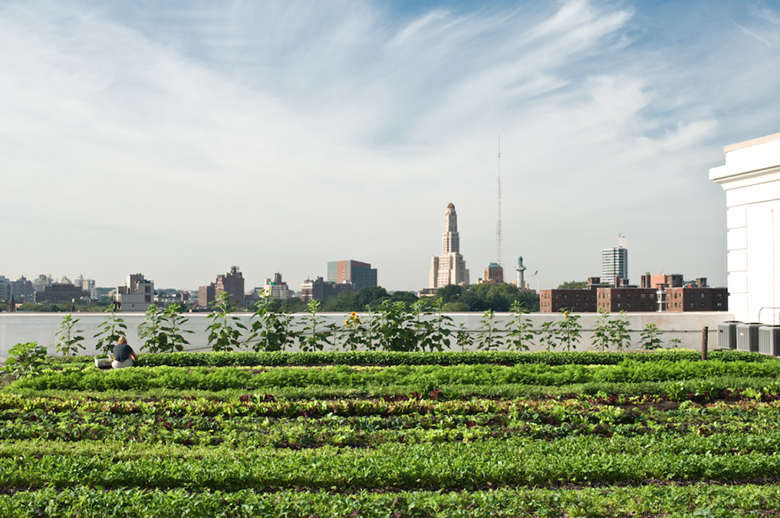
A casual consideration of New York City’s numerous farms and community gardens—the largest system in the country, according to the City University of New York’s Urban Food Policy Institute (UFPI)—would indicate that urban ag is flourishing in the five boroughs. But a bill introduced by Council Member Rafael Espinal calling for the implementation of a comprehensive agricultural plan indicates that there is work to be done in ensuring that farms and farm-related businesses can continue to grow and thrive here, and contribute, on a number of levels, to a more sustainable city.
The bill, Int. No. 1058, is supported by Brooklyn Borough President Eric Adams, UFPI, 46 co-signing council members and a vocal swath of New York’s farmers and gardeners. It looks to codify urban farming along the lines that the city of Boston already has, “By setting definitions of what urban farming is, looking at zoning codes, and creating a language to protect community gardens [and farms] from development,” says Espinal. For example, “Parks are considered in zoning conversations, but urban farms are not, and in aquaponics, there’s confusion around fire and building codes. We only need to clarify these things to make it easier” to protect farmers.
A lack of clarity around the importance of urban farms and farm-related businesses—to bringing affordable healthy food to low-income communities, creating jobs, developing local youth and making the city more climate resilient—makes it difficult for these enterprises to tap the sources of funding that are necessary for them to succeed, Espinal says. As urban planner Wylie Goodman testified at the bill’s hearing on June 11, “financial, legal and land use obstacles reduce the degree to which entrepreneurs can … consider New York a viable location to build their businesses,” reports UFPI.
Espinal has been pushing his bill for about four years, and in that time, some small progress has been made. Namely, the Mayor’s Office has created an online portal to connect community gardeners and food-industry folks to existing resources. “It’s a first step to opening City Hall up to the idea” of a comprehensive plan, says Espinal. “But it’s not enough.”
Ultimately, the bill’s various stakeholders would like to see a more concerted effort to figure out how much of the city’s land should be devoted to agriculture, and what additional resources would actually be required in order to help it expand and thrive. “My dream is that the passing of the bill into law will create an urban ag czar,” says Espinal. He or she would oversee “a central space where you could communicate with a single agency in order to streamline the process of running your garden or your farm or your [ag] business. The reality is, urban ag has been part of the city’s DNA for decades. But we need City Hall to value it.”
The bill needs to be voted out of committee in order to be enacted, which Espinal hopes will happen by the end of the year.



